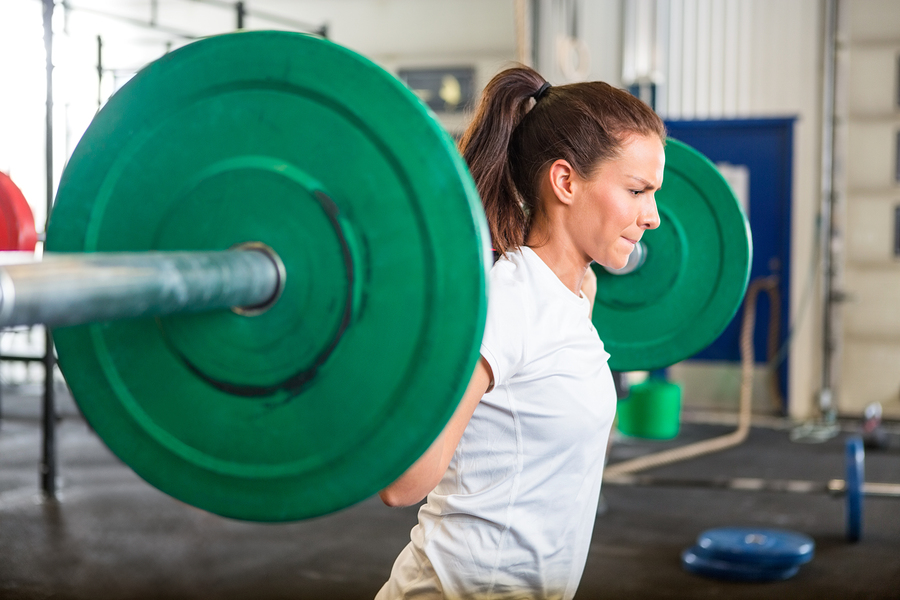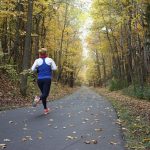
Every year around this time there is a renewed interest in training for a marathon. Twin Cities Marathon took place this past weekend, Chicago Marathon is this coming weekend, and runners toe the line for the New York City Marathon on November 3rd. There is something very enticing about completing a marathon. Many people love the idea of accomplishing something so challenging – experiencing that high that comes from crossing that finish line which also seems to magically erase the pain and discomfort that took place during the 16 weeks of training and the final 10 miles of that very same marathon. One can’t deny the allure of hearing thousands of people cheering for you from the start line, through the “wall” of mile 20, along the slow drudge that follows for many new and experienced marathoners, and finally the finish line. All doubts and questions as to why you considered doing this just a few miles before have evaporated, and you now are thinking you can accomplish anything!
For others, the thought of running a marathon, or anything longer than a 100 meter dash, sounds like punishment. The top objection I hear to running is knee pain. Next is hip pain. Other pains associated with or blamed on running are shin splints, sore calves, glute pain, and hamstring pain. These are common issues with runners; however, the great majority of these issues could be avoided if an athlete does not neglect any of the four key components of run training. This is validated by the fact that every Total Strength Fitness athlete who ran a marathon this fall arrived at the start line healthy and injury free, and crossed the finish line with a personal best time.
Strength Work
Nearly everyone has some sort of muscle imbalance. The muscles on one side of the body tend to be stronger than the muscles on the other. Hamstrings and glutes (butt muscles) are weak (from sitting at desks, on couches, and in cars) while quadriceps are strong. Some muscles work harder than they should and others sit back and relax while another muscle takes care of the job it wasn’t supposed to have in the first place. When a person in this condition (which, again, is most of us) begins a running plan and does no other supporting training, injury is bound to happen.

This is why strength work is essential for a successful running experience. The great news is that doing strength work for your core, glutes, and hips (OK, that is pretty much most of the body) for as little as 30 minutes two times per week can potentially avoid most running-related injuries. The most common issue is weak glutes. Because of the typical American lifestyle that includes desk jobs, commuting to work in a car, and spending time in front of the television, the foundation of most movement gets very little opportunity to increase or even maintain its strength. As a matter of fact, many runners find that they struggle activating the glute muscles (getting them to fire up or engage), even if they have strong glute muscles.
The remedy for this situation is to consistently work on core (abs, Obliques, back, glutes, and hips) strength. A very simple, yet effective routine may look something like this:
Plank Hold 60-90 seconds
Side Plank Hold 30-60 seconds
Mountain Climbers 30 – 60 seconds
Romanian dead lift 8-10 reps (with dumbbells or barbell)
Bridges or Donkey Kicks 20 – 30 reps
Side Walk Squats with band 10-20 steps each direction
Lateral leg raises 20-30 reps (with or without band)
Lunges with dumbbells 8-10 reps/leg
Calf Raises 10-15 each way (toes in, toes out, toes straight ahead). Calves are not a core muscle, of course; however, their strength and functionality are a key factor in your running success.
Do the above as a circuit two to three times. Of course, proper form is essential. If you are unsure of what any of these exercises are or how to do them, contact me, your personal trainer, or run coach.
Another way to avoid injury is to make certain not only that your glute and hip muscles are strong, but that they also are activated. When the glutes and hips are not functioning well, other areas of the body have to take over and can suffer overuse injuries. The knees are highly susceptible to this problem when the glutes and hips are slacking off on their duties. It takes less than 5 minutes to do pre-run glute activation. Doing 1 to 2 rounds of these exercises prior to a run will help the glutes wake up and do their job.
- Standing lateral leg raises (15-20 reps)
- Bridges (20 reps) – tighten the glute muscles at the top of the bridge
- Donkey Kicks & Fire Hydrants (kneeling lateral hip abduction with bent knee) (10 – 15 reps)
Rest/Recovery/Mobility

This component of run training is often pushed aside due to an athlete feeling he or she does not have the time for this. I have found that many athletes don’t understand the importance of consistent quality sleep to their training. I am confident that many athletes would improve their running performance significantly if the only thing they changed was making certain they got at least 8 hours of quality sleep each night. It is during times of sleep that the body repairs, recovers and relaxes. A good night’s sleep allows an athlete to recover much more quickly from hard workouts and helps prepare the athlete for the next workout, both mentally and physically.
Another inexpensive way to help your legs and glutes recover from tough run workouts is the foam roller. Using a foam roller before and after every run will be incredibly beneficial in helping you avoid injury. The key to successful foam rolling isn’t the rolling part, though. Instead, roll the foam roller to the “hot” or tender spot, then press into that muscle at that location for approximately 30 or more seconds without moving the foam roller. This can be painful, but it isn’t necessary to experience excruciating pain. Instead, as you feel the pressure on the specific area of the muscle that is tender, you can lighten the pressure of the foam roller to a tolerable level. Foam rolling is one method of self-myofascial release. Fascia is the thin layer of tissue that surrounds the muscle and can restrict muscle movement when the muscle becomes inflamed. The National Academy of Sports Medicine provides an excellent document that describes proper foam rolling technique.
Other recovery methods to consider are active and static stretching, Epsom salt bath, ice bath, and compression wear. If your budget allows, consider regular appointments to a massage therapist, chiropractor or physical therapist so that any small issues you are noticing never become big issues that prevent you from training. I see a physical therapist every four weeks as a form of preventative maintenance. Since implementing this strategy within my training, I have not had to miss a single workout due to injury.
Quality Nutrition

There is so much confusion about what is good nutrition. Should I eat carbs, how much protein should I eat? Should I avoid fat? If you are an athlete in training, your diet should not eliminate a whole macro-nutrient (fat, protein, and carbohydrate). Athletes, especially endurance athletes such as runners, need a variety of foods that include fat, protein and carbohydrates. About the only food I can think of that would be ideal to minimize is refined sugar. However, sometimes a runner needs quick access to fuel and sugar is a quick way to get energy to the muscles. Sugar is not just refined table sugar. Foods such as honey, maple syrup, and fruit juices for example are considered sugar yet are more nutrient-rich.
Each macro-nutrient plays an important role in our training, and we are not doing ourselves any favors by eliminating any one of them. Fat is necessary for long lasting fuel. When stored in the body, it helps our brain function, protect our organs, and keep our joints well lubricated. Carbohydrates give us quick access to fuel (in the form of glycogen), but it is a much more limited supply as muscles can only hold so much glycogen. Carbohydrates also help the brain function well. Protein is key to rebuilding and repairing muscles after tough workouts. As you can see, we are missing out on key benefits if we completely eliminate any one of these macro-nutrients. Below is a short list of mostly whole foods that are typically recognized as specific macro-nutrients.
| Carbohydrates | Proteins | Fats |
| Rice | Beef, chicken, pork | Oils – olive, canola, coconut, grapeseed, corn, etc. |
| Wheat | Eggs | Butter |
| Corn | Yogurt | Avocados |
| Oats | Chick peas | Cheese |
| Fruit | Lentils | Nuts |
| Potatoes, yams, sweet potatoes |
Kidney beans | |
| Squash |
Good nutrition includes consistently eating whole foods (strive to minimize processed foods as much as possible) that include the foods listed above as well as making certain your plate has a significant serving of colorful vegetables and fruit which are great sources of important micro-nutrients (minerals and vitamins).
Another component of nutrition is hydration. This includes water, of course, as well as maintaining proper amount of electrolytes which help the body maintain proper hydration levels. Especially when training in warmer temperatures, runners not only lose water through sweating but also important electrolytes such as sodium, potassium, calcium, and magnesium. Electrolytes are minerals that when dissolved in the body become particles that carry electrical charges. These electrolytes are needed for various bodily processes such as proper nerve and muscle function (i.e. muscle contraction) and keeping you hydrated. A common piece of advice is to carry water (and then, of course, drink it), or have access to water, if you are running for an hour or more. If your workout causes you to sweat heavily, be prepared to replenish electrolytes by using an electrolyte beverage or taking an electrolyte supplement during and after your workout.
Consistent Running

Of course, any good run training plan includes running. Keep in mind, though, that any successful runner does not neglect the other three components of run training. When striving to succeed in running, also keep in mind that randomly heading out for a run without consistency and purpose is more likely to lead to problems than it is to successful race finishes. I will admit, though, that I do include “run how you feel” runs in my athletes’ training plans on occasion. Sometimes the mind needs a break from the seriousness of training, and the mental benefits of a “run for fun” workout can be incredibly beneficial.

If you are self-trained, you need to know what you want to get out of a workout, and then you need to know what type of run workout will get you that result. Typically, a run coach will include runs that do one or more of the following within a workout:
- Improve aerobic capacity and endurance
- Improve strength and speed
- Improve pace control and awareness/race pace runs
- Improve lactate threshold

When executed correctly, a training plan can help a runner achieve great success toward achieving personal goals. A good running coach will encourage her athletes to include all four of these components in their training. A good athlete does not take shortcuts, but rather will remain consistent in all four of these components of successful run training. If you are interested in being that athlete, contact me so you can get to the start line healthy and injury–free and then cross the finish line with a new sense of accomplishment and confidence.


 The Day I Crossed the Ironman Finish Line
The Day I Crossed the Ironman Finish Line
Leave a Reply